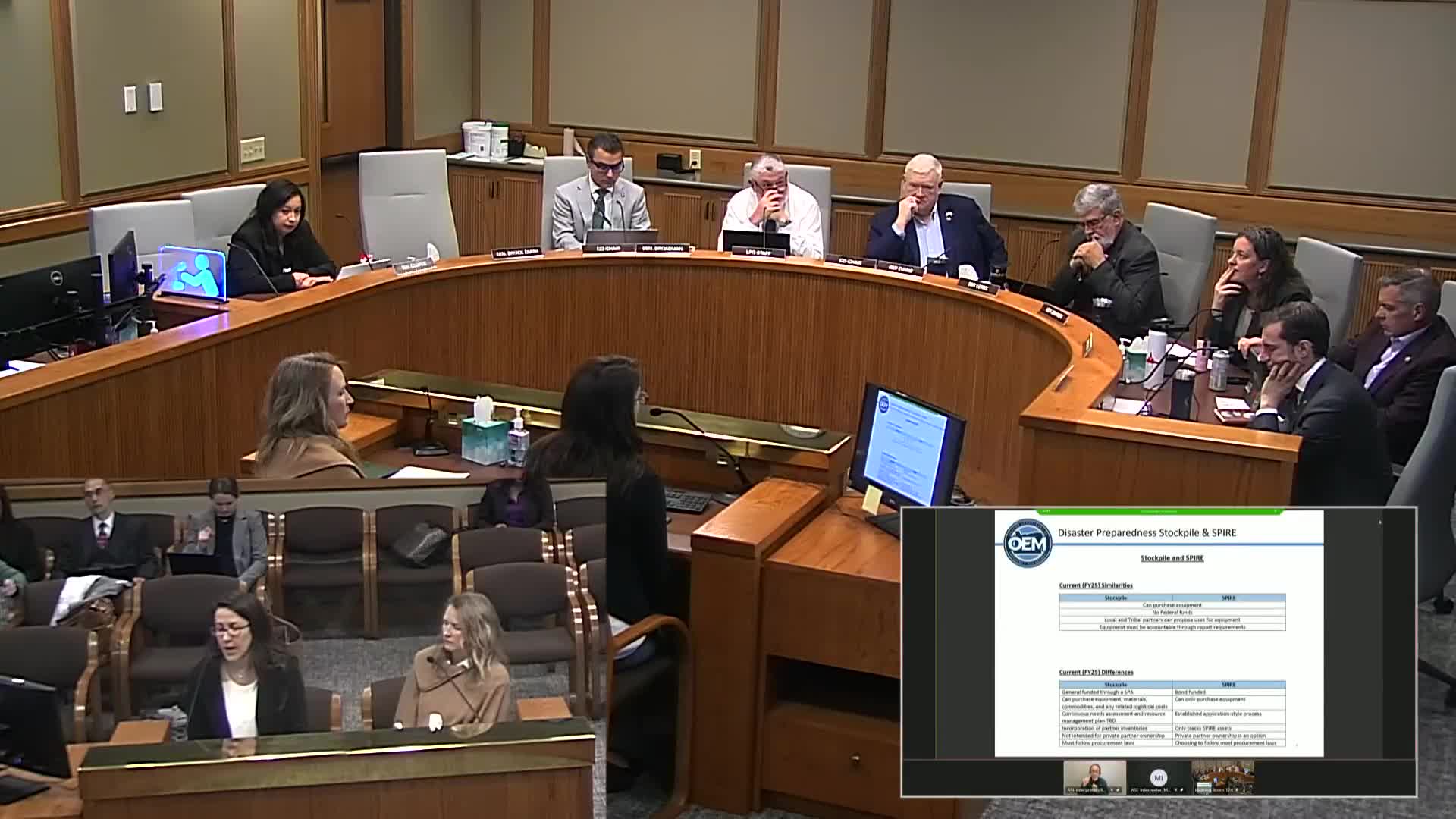Oregon agencies finalize disaster stockpile funding and procurement strategies
April 29, 2025 | Public Safety, Ways and Means, Joint, Committees, Legislative, Oregon
This article was created by AI summarizing key points discussed. AI makes mistakes, so for full details and context, please refer to the video of the full meeting. Please report any errors so we can fix them. Report an error »

Oregon's emergency preparedness efforts are set to receive a significant boost following the recent discussions in the Joint Committee on Ways and Means Subcommittee on Public Safety. The committee reviewed the implementation of a statewide disaster preparedness stockpile plan, a directive stemming from House Bill 4068 passed in 2022. This plan aims to enhance Oregon's readiness for emergencies by establishing a comprehensive stockpile of essential supplies.
During the meeting, it was revealed that the Oregon Office of Emergency Management (OEM) and the Oregon Health Authority (OHA) have made substantial progress in developing this plan. A recent report submitted to the Emergency Board outlined the procurement and management strategies for the stockpile, which includes logistical considerations for the placement and distribution of supplies.
Key funding allocations were discussed, with the Oregon Department of Human Services set to receive $3.2 million for disaster supply caches specifically for coastal regions. The Oregon Health Authority will receive $837,000 for personal protective equipment (PPE) and medical supply caches, while the Department of Agriculture is allocated $200,000 for animal sheltering kits. These funds are crucial for ensuring that local agencies can effectively manage their own procurement processes and respond to emergencies.
The committee also addressed the importance of accountability in managing these supplies. Agencies will be required to report back to OEM on the usage and rotation of stockpile elements, ensuring that resources remain effective and ready for deployment when needed. This oversight aims to prevent issues similar to those experienced during the pandemic, where PPE supplies were not adequately rotated.
Looking ahead, the stockpile program is focused on fostering collaboration among state, local, and tribal partners to create a unified approach to emergency preparedness. The ongoing efforts will not only enhance Oregon's resilience in the face of disasters but also ensure that the state is better equipped to respond to future challenges. As these initiatives progress, the community can expect improved safety and readiness in emergency situations.
During the meeting, it was revealed that the Oregon Office of Emergency Management (OEM) and the Oregon Health Authority (OHA) have made substantial progress in developing this plan. A recent report submitted to the Emergency Board outlined the procurement and management strategies for the stockpile, which includes logistical considerations for the placement and distribution of supplies.
Key funding allocations were discussed, with the Oregon Department of Human Services set to receive $3.2 million for disaster supply caches specifically for coastal regions. The Oregon Health Authority will receive $837,000 for personal protective equipment (PPE) and medical supply caches, while the Department of Agriculture is allocated $200,000 for animal sheltering kits. These funds are crucial for ensuring that local agencies can effectively manage their own procurement processes and respond to emergencies.
The committee also addressed the importance of accountability in managing these supplies. Agencies will be required to report back to OEM on the usage and rotation of stockpile elements, ensuring that resources remain effective and ready for deployment when needed. This oversight aims to prevent issues similar to those experienced during the pandemic, where PPE supplies were not adequately rotated.
Looking ahead, the stockpile program is focused on fostering collaboration among state, local, and tribal partners to create a unified approach to emergency preparedness. The ongoing efforts will not only enhance Oregon's resilience in the face of disasters but also ensure that the state is better equipped to respond to future challenges. As these initiatives progress, the community can expect improved safety and readiness in emergency situations.
View full meeting
This article is based on a recent meeting—watch the full video and explore the complete transcript for deeper insights into the discussion.
View full meeting
